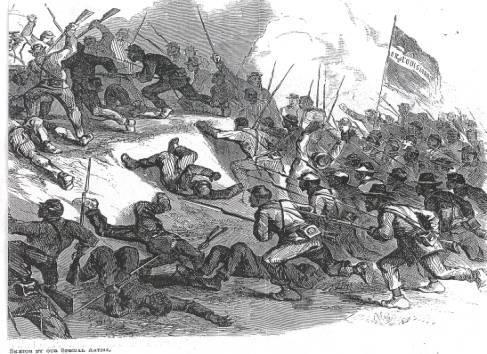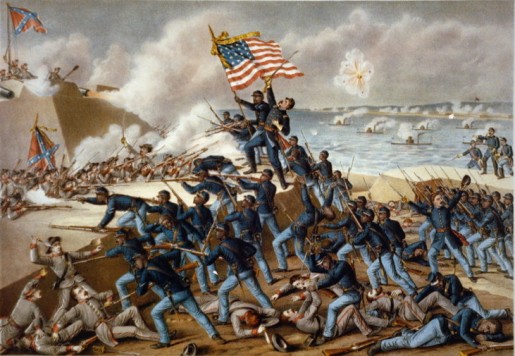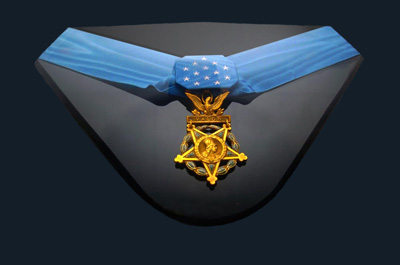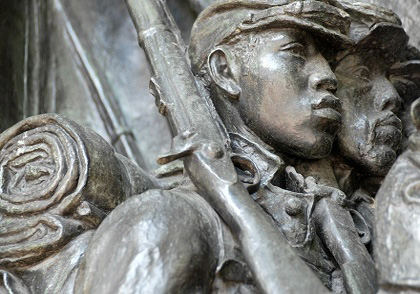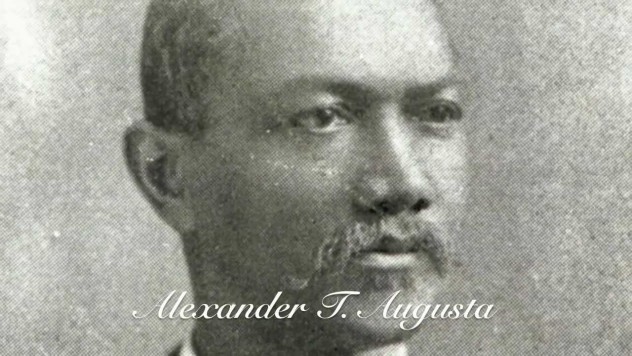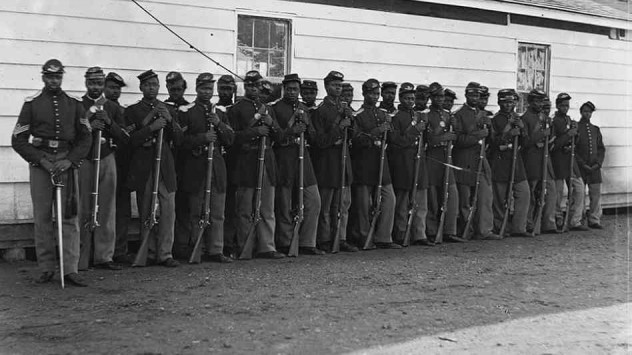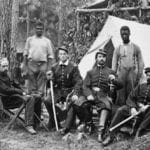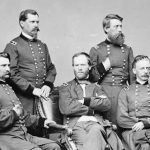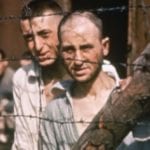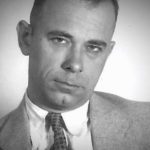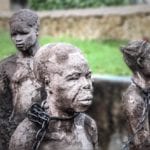10Andre Cailloux
Andre Cailloux was born a slave in 1825 but was freed in 1846. He quickly became a leader within the free Afro-French community of New Orleans. In September 1862, Cailloux joined the Union’s 1st Louisiana Native Guard, being made captain of Company E. His company was considered one of the best-drilled in the regiment. On May 27, 1863, General Banks led a poorly planned attack on heavily defended Confederate positions at Port Hudson. Cailloux’s company spearheaded the assault and were ordered on a suicidal charge against enemy sharpshooters. Despite suffering heavy losses, Cailloux inspired his men to persevere, and even led further charges, during which his arm was blown off by cannon fire. Despite now only having one arm, he continued to lead the charge until he was killed by an artillery shell. His heroism quickly became the stuff of legend, with his funeral attended by thousands and his efforts inspiring many African-Americans to enlist.
9Robert Smalls
Born into slavery, Robert Smalls worked as a pilot in the harbor at Charleston. When the Civil War broke out, Robert was assigned to steer the CSS Planter, an armed Confederate military transport. First, he stole the boat while the Planter’s officers were ashore sleeping. Disguising himself as the captain and giving the correct secret signals, he successfully sailed the Planter past five Confederate forts that guarded the port. He then surrendered the ship, as well as a codebook, to the Union vessels that were forming a blockade. The Union commander at Port Royal, rightly impressed, sent Smalls to see President Lincoln, who he persuaded to allow African-Americans into the Union Army. Smalls was also given command of his old vessel, now in the Union’s service, making him the first black naval captain of the war. He deactivated mines that he had helped to plant as a slave and assisted in the destruction of railroad bridges. To top it off, he later became a congressman.
8William A. Jackson
Despite being a slave when the Civil War broke out, William Jackson was in a position of power which he fully exploited. As a slave in the home of Confederate president Jefferson Davis, William was perfectly placed to become a spy for the Union. The loud-mouthed Davis saw Jackson as a piece of furniture rather than a possible enemy agent. As his coachman, Jackson risked his own life to listen in to conversations between the President and important members of the army. When Jackson fled across enemy lines in late 1861, he gave the Union valuable information about supply routes, military strategy, and Confederate supply shortages.
7William H. Carney
Escaping slavery as a child through the Underground Railroad, William Carney joined the Union army at the first opportunity. During the Battle of Fort Wagner his regiment spearheaded a charge across a beach into withering enemy fire. When the color sergeant dropped, Carney picked up the flag and moved to the front of the charge. After the Union took the walls, Carney found himself alone and was shot twice. Forced to leave the wounded, he joined up with an advancing regiment where he was hit a third time. After being escorted to a field hospital, Carney passed off the flag to another member of the 54th. It was then that it became apparent that William Carney had been holding the flag the entire time, not letting it touch the ground once. For his heroism, he became the first African-American to earn the Medal of Honor.
6Aaron Anderson
Another African-American Medal of Honor winner was Aaron Anderson. After joining the navy in 1863 at the age of 53, Anderson became a poster boy for the US Navy due to his heroic actions. In 1865, Anderson was an oarsman on a small boat equipped with a howitzer to attack Confederate forces in Mattox Creek, Virginia. After finding three abandoned enemy ships, the howitzer crew were preparing to destroy them when they came under fire from 400 Confederate soldiers on the shore. The barrage of bullets was so deadly that it destroyed most of the oars and the only musket on board, and heavily damaged the boat. Anderson and the few remaining men with oars managed to maneuver to safety under intense fire, ensuring that only one man was injured. For his insanely brave actions, Anderson got a spelling mistake on his Medal of Honor, which was awarded to “Aaron Sanderson.”
5Powhatan Beaty
Born into slavery, Powhatan Beaty had become a free man and moved to Cincinnati by April 1861. After a devastating Confederate victory at the Battle of Richmond, an attack on the city was feared and all men living nearby, including Beaty, were drafted to build defenses. For the next 15 days, the unarmed unit, many of whom were black men, voluntarily constructed defenses far in advance of Union lines. In 1863, Beaty enlisted, joining Ohio’s first black combat unit. Promoted to sergeant within two days, he soon commanded 47 men. By the Battle of Chaffin’s Farm on September 29, 1864, Beaty was a first sergeant. As part of an attack which was eventually called into retreat, Beaty ran into intense enemy fire to retrieve a flag which had been dropped 550 meters (1,800 ft) away. Despite the suicide charge, Beaty was the highest-ranking soldier that survived from his company. He instantly took charge of the men, leading a second charge which successfully drove the Confederates back. Beaty was awarded a Medal of Honor on April 8, 1865.
4Alexander Thomas Augusta
Alexander Augusta wasn’t a hero for facing down the barrel of a musket, but for the determination that he showed in the face of oppression as a surgeon in the Union army. Born to free parents in 1825, he enrolled as a medical student in 1850. In 1861, he enrolled, becoming the first African-American physician out of the eight that would sign up for duty. He rose to the rank of major, making him the highest ranking African-American at the time. Despite saving lives, Alexander was attacked by mobs in both Baltimore and Washington. Two Union assistant surgeons also complained to President Lincoln about having to report to an African-American, forcing Augusta to be transferred to Washington. Despite the prejudice he faced, Alexander continued to serve as a surgeon until the end of the war, using his position to fight for black rights, especially the right to ride streetcars.
3Miles James
Miles James, born in 1829, joined the army in September 1864. As a corporal in Company B of the 36th Colored Regiment, James served at the Battle of Chaffin’s Farm on September 30, 1864. During the battle, Miles was hit by a shot which mutilated his arm. Despite being urged to retreat and told that he needed immediate amputation, Miles proceeded to lead his men, firing and reloading his pistol with a single arm. All within 30 meters (less than 100 feet) of the enemy line. James was later honorably dismissed from the service after the battle for his new disability.
2James Daniel Gardner
Gardner, a private in Company I of the 36th Colored Regiment, also served at the Battle of Chaffin’s Farm. While his company was charging Confederate positions, Gardner saw a Confederate officer rallying his men on the parapet. Spotting his chance, Gardner charged ahead of his unit. He succeeded in shooting the officer, but failed to kill him. So he just kept on charging until he was close enough to pierce him with his bayonet. The day after, Gardner was promoted to sergeant, and he was even given a Medal of Honor for his actions.
1John Lawson
Born June 16, 1837, John Lawson is a perfect example of how some people can shrug off pain to achieve amazing things. After enlisting in the navy in December 1863, John was assigned to the USS Hartford as a member of the ammunition party which supplied the deck guns. During the Battle of Mobile Bay, on August 5, 1864, the Hartford was badly damaged by a Confederate shell. The entire ammunition crew was killed, except for Lawson who was thrown against the side of the ship, badly injuring his leg. Despite being urged to go below deck for medical treatment, “upon regaining his composure” Lawson continued to supply the gunners by himself. This was previously a six-man job and Lawson now had only one good leg. He was awarded the Medal of Honor for his heroism. Mark is an award-winning 10 meter swimmer and not-so-award-winning shoe wearer and air breather. His degree in History and Geography doesn’t get him nearly as many women as he had expected. You can find him on Twitter here.
